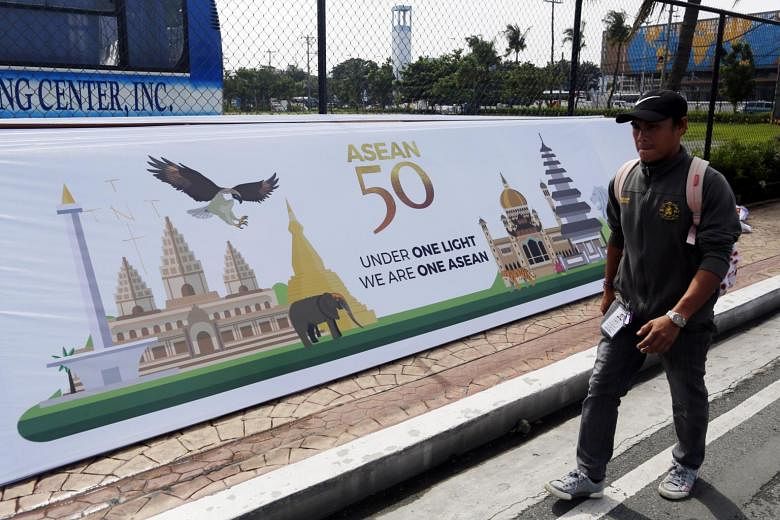There was a time not so long ago when Beijing courted Asean with a charm offensive, a diplomatic strategy that was open to compromise and focused on growing goodwill and support in the region for China.
Now, it seems that strategy is supplemented by a shame offensive, and the recent Belt and Road Initiative(BRI) Summit in mid-May may have been an example of how this new diplomatic strategy plays out in practice.
As Thailand is the Asean country I know best, let me focus on the Thai Prime Minister's absence from the summit. He was one of three Asean leaders not invited to the summit - the other two were Singapore Prime Minister Lee Hsien Loong and Brunei Sultan Hassanal Bolkiah.
The omission of Mr Prayut Chan-o-cha from the guest list of one of the year's largest international summits surprised many in Thailand, given the seemingly rosy ties between the two countries. In fact, Beijing had earlier endorsed the May 2014 military coup that led to Mr Prayut's appointment, thereby strengthening the Bangkok-Beijing axis.
The Thai Foreign Ministry sought to explain that Mr Prayut's absence from the BRI Summit had no political bearing as the Chinese government had invited the Thai leader to another important event - the ninth Brics Summit in Xiamen next month.
However, this official explanation could not hide Beijing's irritation over delays in the Thai-Chinese high-speed railway project, an important link that would allow China to connect its remote landlocked regions with seaports in mainland South-east Asia, and ultimately to Singapore.
What is certain is that shortly after the BRI Summit, Thailand sped up the process of approvals for the project. That followed some 17 rounds of unsuccessful negotiation over three years. The 18th round, which took place 10 days after the BRI Summit, ended the impasse. The Thai Transport Ministry agreed to clear a legal bottleneck regarding the use of Chinese personnel and materials, even though such use contravenes Thai laws.
In mid-July, Mr Prayut exercised his absolute power under Section 44 in the interim Constitution to issue a decree that bypassed all the legal obstacles. Essentially, it exempts Chinese engineers and architects from taking Thai professional licence exams and allows the use of up to 25 per cent Chinese materials. The recent 19th meeting in early July concluded that construction on the railway would start in October this year.
Was this series of events the result of Beijing successfully playing its diplomatic hand? A Thai government official confirmed the connection.
What has become clear is China's willingness to pressure even friendly countries when its national interests are affected. Such a diplomatic strategy on the part of Asia's rising big power may lead to a situation where regional states are made to choose sides, seriously denting Asean's longstanding hedging strategy towards external powers.
To be successful at hedging, small states need to have the flexibility to adjust their policies to maintain a fine balance between great powers. The external powers, on their part, need to exercise self-restraint and accept sub-optimality in order to maintain peace and stability.
However, the equilibrium has now been disrupted. For instance, Cambodia's close ties with Beijing have caused a drift among Asean countries that led to the group's failure to issue a joint statement on tensions in the South China Sea at the 2012 Asean Summit.
The recent tilt towards China by Malaysia, the Philippines and Thailand has also changed the centre of gravity in the hedging strategy. It has affected both conflict resolution in the South China Sea as well as these countries' longstanding partnership with the United States.
What can South-east Asia do in this situation? Certainly, the region can utilise its own regional institution, Asean. A coordinated policy approach to external powers and regional challenges was the reason for Asean's success in the Cambodia Conflict which took place during the Cold War. As a group of small and medium-sized states, Asean's unity is a weapon which must now be sharpened.
Building such group strength needs political will from each capital in South-east Asia. However, domestic politics seem to loom large and the China card is often used to secure the balance of power in each country.
The current leaders of both Thailand and Cambodia benefit from cultivating close ties with Beijing for the sake of political stability and economic gain. The current Malaysian leadership needs China for its political survival amid the recent political scandal of the 1MDB project.
Myanmar, despite its elected government, still has a strong military that influences the country's politics. Its relations with China will thus likely weigh on Naypyitaw's foreign policy. Laos may have no better choice than to court Beijing as that secures economic opportunity for the landlocked country, and in turn the legitimacy of its ruling communist party.
Other states in South-east Asia may find it tough to maintain a hedging strategy given China's growing economic might. Vietnam has traditionally had complicated relations with China. It has both a maritime dispute with China in the South China Sea as well as economic links.
As for Indonesia, its current foreign policy seems to focus on its border security as well as reaching out beyond South-east Asia. However, the country's need of infrastructure development opens the door for China to exert its influence in many respects.
The current political structure in South-east Asia may well dilute Asean's ability to negotiate with external powers. It would be a tragedy if a failure of coordinated leadership within Asean results in great-power competition turning this region into a strategic battleground.
Asean leaders need to seek another round of consensus to manage this strategic challenge. But who dares to take the lead at this time? That is a significant policy question worthy of discussion across the region.
• The writer is a Visiting Fellow at the Thailand Studies Programme at ISEAS - Yusof Ishak Institute.
• S.E.A. View is a weekly column on South-east Asian affairs.

